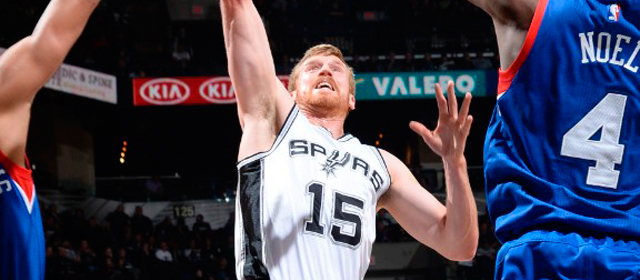Season 48, Game 10
San Antonio 100, Philadelphia 75
6-4, 8th in the West
In watching this game against the 76ers, there’s not much to be learned about the state of the Spurs vis-a-vis the rest of the NBA, because Philadelphia is an NBA team in name only. Holy cow, is that a depressing team to watch. They offered almost zero defensive resistance, and couldn’t hit a jumper to save their lives. The game only remained competitive because Pop was tinkering, playing in his lab with rotations and line-ups. (And perhaps not trying to run up the score on his dear friend, Brett Brown.)
We saw some funky line-ups out there, many that have undoubtedly never played together (and most likely never will again). Pop even went without a PG for a few minutes there in the 4th quarter. Bonner was the team’s leading scorer.
Green and Joseph led the team in minutes. Kyle Anderson got significant floor time. End of the bench players played with the starters. Manu didn’t even make an appearance in the second half. Ayres played a bunch. Daye played a bunch (this is the only scenario in which I’ll accept seeing Daye on the court).
Games like this are important for Pop. He likes to know what he has in each player. More importantly, he likes to know which combinations work where. If he needs Daye to play 20 minutes, can he count on him? (No, obviously.) Can Ayres play with Baynes? Where is Anderson’s development at? Can he play a little point-forward? Can Joseph run the team without Tony or Manu on the floor?
All of this leads to some pretty sloppy and often uninspired basketball. But it can pay dividends in the playoffs, when Duncan might get in foul trouble and we need Baynes or Ayres in there for important first half minutes. Or if Cory will have to start important games. Baynes looked really good running the side pick-and-roll, an important function of the big with the second unit (something Splitter does wonderfully, and Baynes can earn minutes by doing as well); Cory continues to impress when he is allowed to run the offense in the mode of Tony Parker, without Manu looking over his shoulder; Bonner and Green got to see some 3s go in; Ayres played his workmanlike game quite well. It was an important game.
But man, a boring one. And my mind wandered, thinking about the team’s early season offensive and shooting woes. So I did some deep research and compared them to last year’s numbers. (All numbers from Basketball-Reference.com.) In particular, I was interested in 3-pt shooting and shots at the rim, the two areas where the team seems to be struggling this season.
In 2014, the Spurs had a top-notch offense. Overall, the team shot 49%. From 3-pt, 39.7%; at the rim, 67%. They averaged 105.4 pts/gm, 25 assists/gm, and had an offensive rating of 110.5 (offensive rating is the numbers of points expected to be scored over 100 possessions, so it can be normalized for all times accounting for pace). They rated highly in nearly every category, and led the league in both assists/game and 3-point shooting.
This season, the numbers are noticeably down. The team’s overall shooting is 43%, down 6 points. From 3-pt, 32.4%, down 7.3 points; at the rim, 61%, down 6 points. As a result they are only averaging 94.4 pts/game with an offensive rating of 101.7, down 11 points and 8.8 points respectively. The team is averaging 22.7 assists/game, only down 2.3. The assist numbers are relatively similar, though, which shows the ball is still moving and the team is still committed to the offense. The slight dip would be expected from the shooting woes, as an assist only counts when the ball goes in.
So across the board, all offensive numbers are lacking. Last season, the team averaged 8.5 makes per 21.4 3-pt attempts. This season, they are averaging 7.3 makes per 22.5 attempts. (Note: the makes per game was at 7.0 before the 76ers game.) So an extra one to two 3s per game (Patty and Marco should help with that), and perhaps two to three extra makes at the rim per game (Tiago should help with that), and voila, 10 more points per game, and a return to last year’s efficiency. (This also demonstrates the thin line that exists between a worrisome offense and an elite one.)
To my eyes, the offense is still in good working order (though still shaking off some rust), the team is just shooting poorly, particularly in comparison to last season. The real question is: is this an aberration? Are teams playing better defense? Are we not taking the ‘right’ shots and/or taking more difficult shots with lower odds of going in? Is this just an issue of it being a “make or miss league”, or is the team doing something fundamentally different and ‘wrong’? I don’t have answers for these questions, but the shooting is the story of the young season for me. This is what I’ll be watching most closely over the next 10-20 games.
Next up: the Spurs travel to Cleveland on Wednesday to take on LeBron James and his new Cavs team. Their season has really gotten off to a shaky start, and they are under a lot of scrutiny. I think both teams plan to use this game as an early season gauge, and I expect a pretty competitive game.


